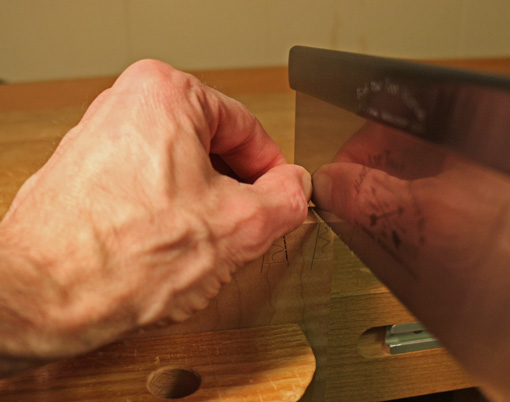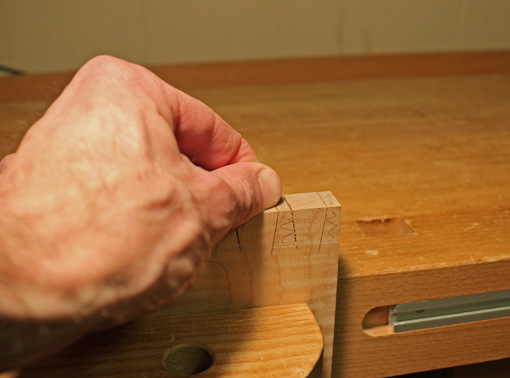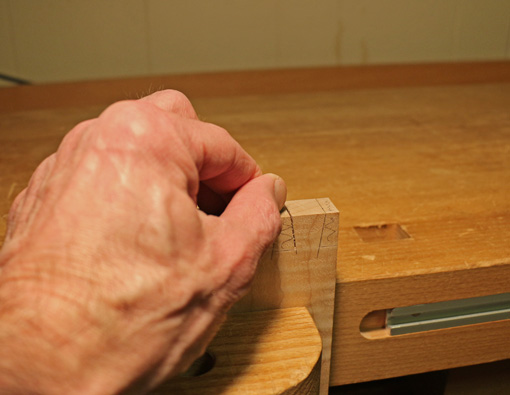
Come on, woodworking isn’t really so hard to do. Just have all your stock flat, straight, and square, cut to the layout line, and never make a mental error. Everything will go just fine.
Just kidding.
But starting saw cuts accurately does help to make woodworking, especially joinery, go much better. “Well begun is half done” is true for this task. Accordingly, it is worthwhile to explore nuances of technique.
Laying the saw teeth on the wood and pushing without any guidance is generally too unreliable. So the left (free) hand is set on the wood and a finger, usually the thumb, contacts the saw plate above the toothline to provide stabilization.
This can be done with the thumb alone, but it is more stable when the side of the index finger is placed against the pad of the thumb while the hand rests on the work piece. However, the thumb pad tip is squishy, so it works better if it is also firmed by pressure from the index finger.
Even better is to angle the thumb a bit to the left so as to engage the hard thumbnail tip against the saw plate. The index finger acts to not only stabilize the set up but to help bring the saw teeth to the proper place to start the cut and fine tune the placement.
I find that using the thumb knuckle is less controllable since it is not on the most distal portion of the finger.
Below, with this angle of the thumb, only the soft tip will contact the saw plate.

Below, I’ve re-angled my thumb so the nail will contact the saw plate. This will vary depending on the angle of the cut, sight line considerations, wrist flexibility, and even the length of the nail. In some situations, it may be too awkward or impossible.

Is this getting too punctilious, picky, or perhaps persnickety? I don’t think so. These are the bits of technique that are not mentioned in books but can make a real difference in work. Though these finger configurations work for me, the key point is to work out the details to suit your hands and the circumstances of the task to achieve the control and ease that is part of good craftsmanship.


Thanks for talking about this! And for clarifying it a lot. I started doing this even before I had any instruction- for a long time I thought I was doing something lazy or just compensating for poor technique or a dull saw. My first attempt was putting the first joint of the thumb against the saw- I may have been thinking it was safer. It’s good to get some guidance (I was trying to avoid a pun there but didn’t manage to).
Thanks for reading and for the comment, Tim.
One of the main issues with subtle aspects of technique like this is realizing that they matter and deserve attention. There is a tendency when learning woodworking technique to neglect thinking through and experimenting with those nuances that go without mention in instructional books. Yet those very issues are often the ones that get in the way of success.
It pays to play a bit in the shop and find what works in YOUR hands.
Rob